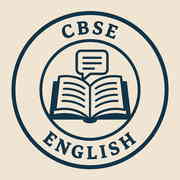Professional Courses
Industry-relevant training in Business, Technology, and Design
Categories
Interactive Games
Fun games to boost memory, math, typing, and English skills
Typing
Memory
Math
English Adventures
Knowledge

CBSE 8 English
This module focuses on enhancing spoken English, revising grammar comprehensively, and preparing students for their examinations. It emphasizes effective communication skills, proper grammar usage, and advanced writing techniques while providing structured practice activities and mock exams. These components are designed to foster lifelong learning and encourage positive study habits.
10 Chapters
40 hr
You've not yet enrolled in this course. Please enroll to listen to audio lessons, classroom
podcasts and take practice test.
Course Chapters
Chapter 1
Module 1: Foundation Skills & Introduction to Literature
Chapter 2
Module 2: Honeydew - Prose Deep Dive (Part 1)
Chapter 3
Module 3: Honeydew - Poetry & Prose (Part 2)
Chapter 4
Module 4: It So Happened - Supplementary Reader (Part 1)
Chapter 5
Module 5: Grammar Essentials & Sentence Structure
Chapter 6
Module 6: Honeydew - Prose & Poetry (Part 3)
Chapter 7
Module 7: It So Happened - Supplementary Reader (Part 2)
Chapter 8
Module 8: Formal Writing & Advanced Grammar
Chapter 9
Module 9: Honeydew & It So Happened - Final Chapters & Revision
Chapter 10
